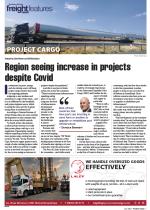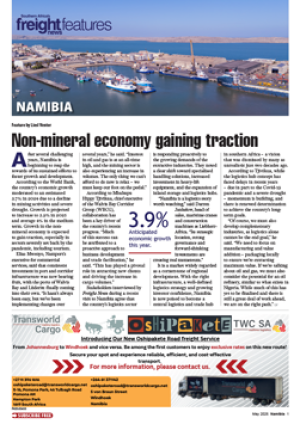Utility-scale solar, wind and geothermal renewable energy projects throughout Africa will drive the demand for project cargo. “The breakbulk sector is likely heading into a new economic supercycle focused on renewables and metals instead of oil, and created by a policy-driven energy transition rather than by demand-driven commodities growth,” writes Janet Nodar in the Journal of Commerce Online.Investments in renewable energy projects were one of the few bright spots in the f low of foreign direct investment (FDI) into Africa during 2020, according to Unctad ’s World Investment Report 2021.“Foreign investment in Africa directed towards sectors related to the Sustainable Development Goals (SDGs) fell considerably in nearly all sectors in 2020. “Renewable energy was an outlier, with international project finance deals increasing by 28% to $11 billion, from $9.1bn in 2019,” according to the report. One of the major projects highlighted in the report is Schneider Electric Solar (France) announcing a $165-million solar energy project in Burkina Faso.Economists Gregor Schwerhoff and Mouhamadou Sy, writing in the International Monetary Fund’s quarterly publication Finance and Development, say investment into renewables is picking up in Africa. “South Africa, Uganda, and Zambia have held renewable-energy auctions that achieved competitive prices and attracted private investors. South Africa already has several solar power plants with a capacity of more than 100 megawatts. “The Lake Turkana Wind Power project in Kenya (with 365 wind turbines capable of generating 850 kW) is another success story,” they state.Bolloré Africa Logistics was responsible for customs clearance and transport of the cargo from Mombasa to the wind farm site 1 200 kilometres inland. The International Renewable Energy Agency (Irena) says Sub-Saharan Africa could meet up to 67% of its energy needs through renewable energy by 2030 – if the right policies and governance structures are in place.There is huge pent-up demand.According to Schwerhoff and Sy, about half of Sub-Saharan Africa’s population does not have access to electricity. Those who are connected pay on average nearly twice as much as consumers elsewhere in the world. Power shortages cost the continent about 2 to 4% of GDP a year. “Given that the population in Sub-Saharan Africa is expected to grow from one billion in 2018 to more than two billion in 2050, the demand for electricity is projected to expand by 3% a year,” they predict. The expectation is that the growth will be in solar and wind projects as ongoing droughts have shown that hydropower is not reliable due to global warming changing weather patterns, and limited scope for geothermal plants. For the authors, the biggest challenge is financing.“Fossil fuel plants are comparatively cheap to build but expensive to run, as they require continued purchases of fuel. “In contrast, renewable sources are inexpensive to operate but have high installation costs, which must be financed up front. “If Africa is to take a new, low-carbon approach to development, its countries must mobilise public, private, and multilateral and bilateral donor financing to raise the funds needed for renewable energy projects,” state the authors.
Renewable energy sparks demand
22 Jul 2021 - by -
0 Comments
Project Cargo July 2021

22 Jul 2021
22 Jul 2021
22 Jul 2021
22 Jul 2021
22 Jul 2021
22 Jul 2021
22 Jul 2021
